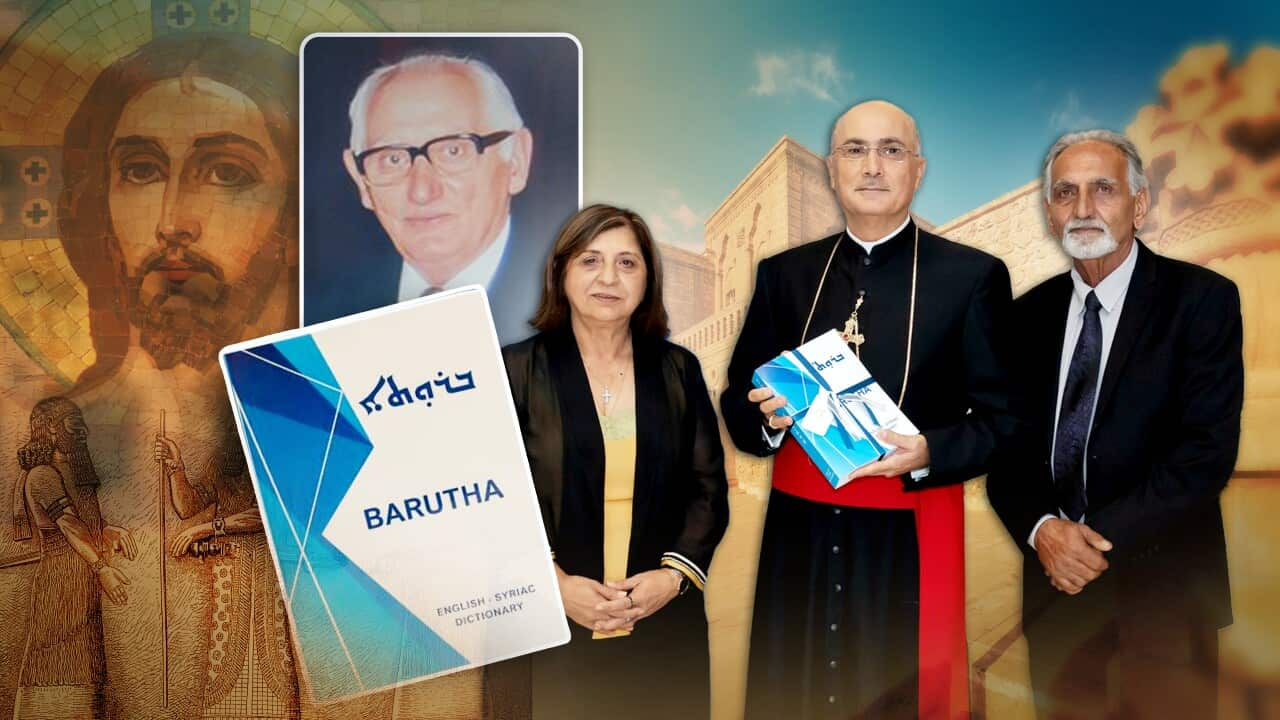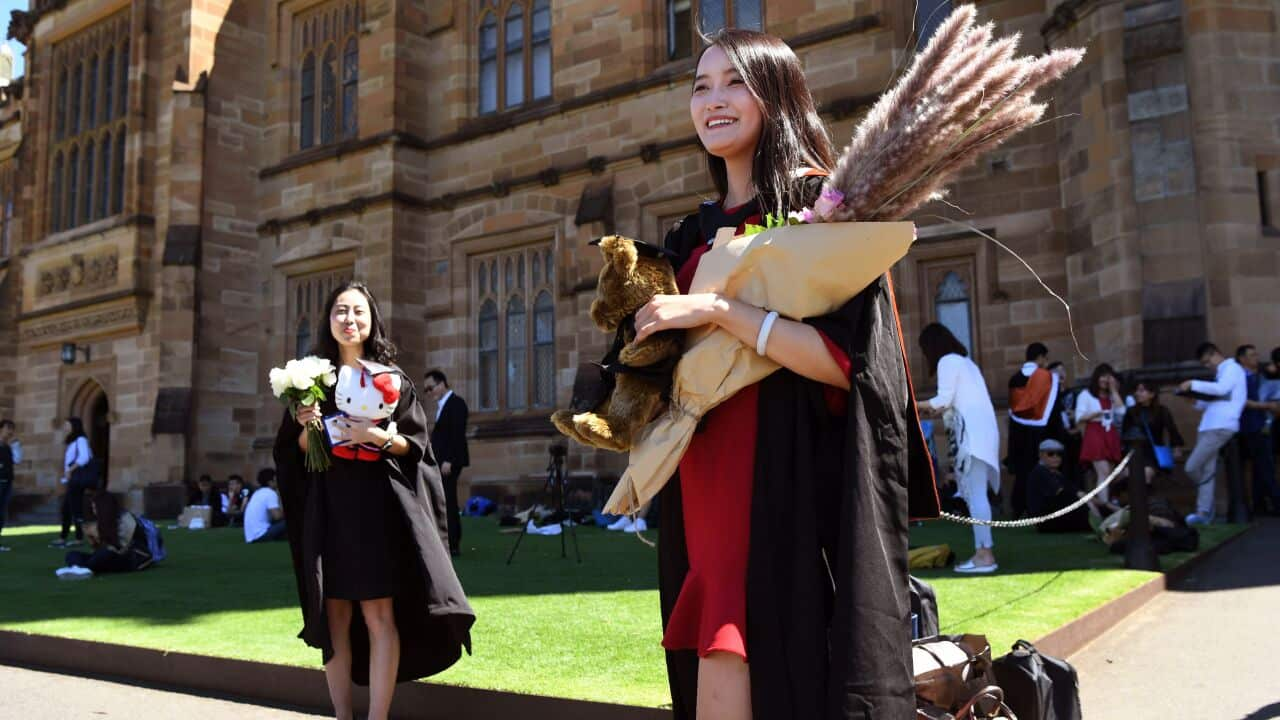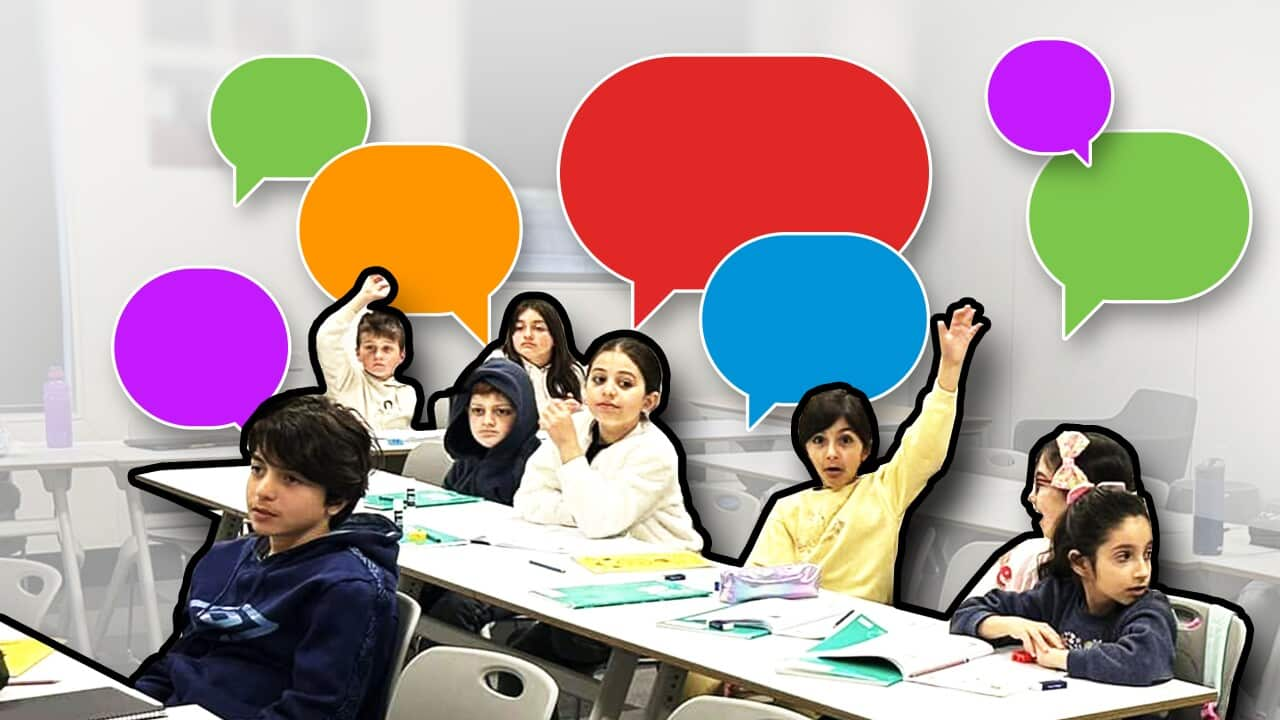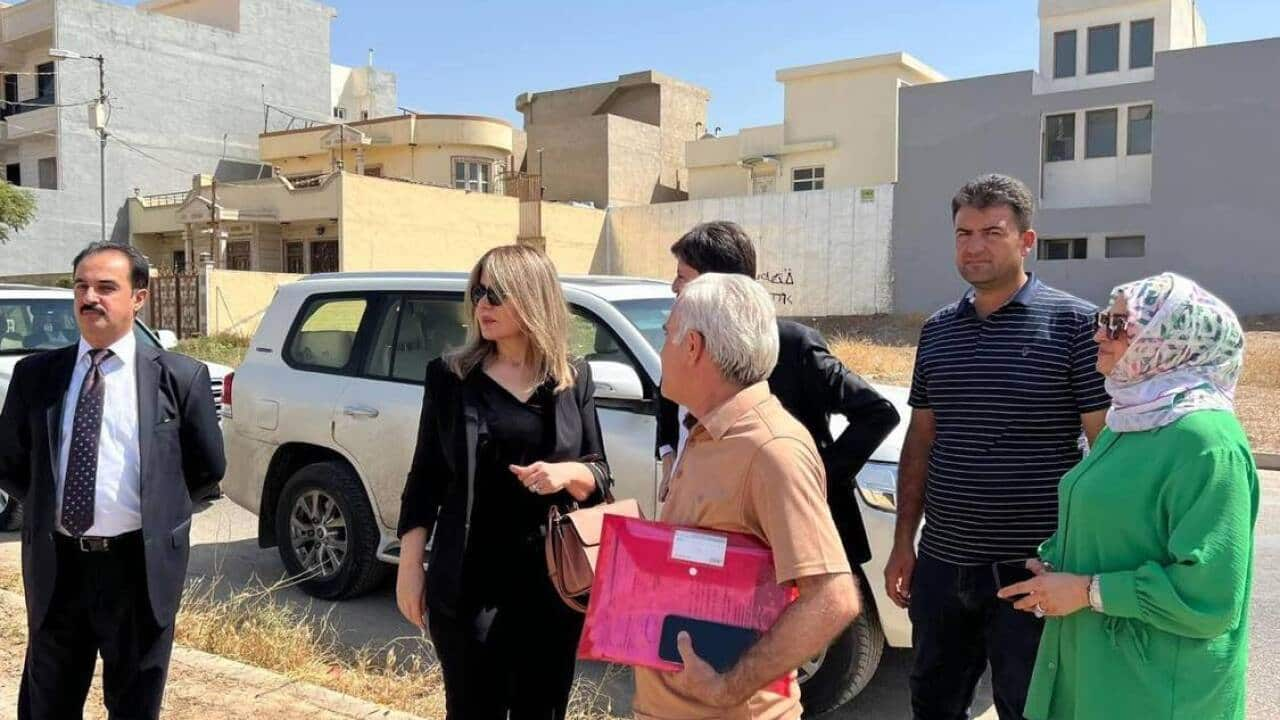Key Points
- Ishu Barutha realised a need for an English to Syriac dictionary after migrating to Australia in the 1960s.
- Following his death in 2003, his family and community banded together to finish the dictionary.
- The 747-page dictionary of 35,000 words was published recently.
Ishu Barutha migrated to Australia with his family in the mid-60s' and, until his passing in 2003, devoted himself to many cultural and community endeavours.
Recognising the need for such a resource among the Assyrian community, one of his goals was to create an English-to-Syriac dictionary, his family told SBS Assyrian.
According to the 2021 Census, almost 60,000 people in Australia speak Assyrian and worldwide, it is estimated that around two million people speak the language to variable degrees.
Syriac is very similar to the ancient language of Aramaic, which would have been spoken and written in the later stages of the Roman Empire and when Jesus of Nazareth is believed to have lived. Aramaic continues to be used for Assyrian Christian church services.
Syriac is a cursive script using an alphabet of 22 letters which is written from right to left in horizontal lines. Unlike English, there is no letter-case distinction between capital and lowercase letters.
SBS Assyrian understands that at the time Barutha began his dictionary project, the only dictionaries on the market focused on Syriac to Syriac, Syriac to Arabic, or Arabic to Syriac translations.
While other English-to-Syriac dictionaries exist today, the Barutha version is the first to classify words into verbs, nouns and adjectives.
Barutha and his family emigrated to Australia in 1966 due to increased tensions in Iraq at the time including persecution of Assyrian Christians like himself.
In the early 1970s, Barutha commenced his literary project by collecting English words from various dictionaries and seeking their Assyrian equivalents.
Despite interruptions due to family commitments and unforeseen events, he managed to compile close to 35,000 words handwritten on large sheets of paper, which he later transcribed into journals, one for each of the 22 letters in the Syriac alphabet.
When a word processor in Assyrian became available, and with the help of his nephew Albert Oshana, he transcribed his work using a computer that he purchased specifically for this purpose.
However, his health declined in the early 2000s, leading to his death before the dictionary was ready for publishing.
Before his passing, Barutha's other nephew George Gewargis uploaded his work onto a specially written database.
Despite their efforts, the task of completing the dictionary fell to Barutha's daughter Edwina, who sought help from her cousins.
"[Dad] always asked me to buy him a red pen, he loved to write in red ink, but he had great Assyrian handwriting," Edwina Barutha said.
The family took on the project and formed a committee of individuals proficient in the Assyrian language, including linguist Hirmis Joudo, who was tasked with revising the dictionary.
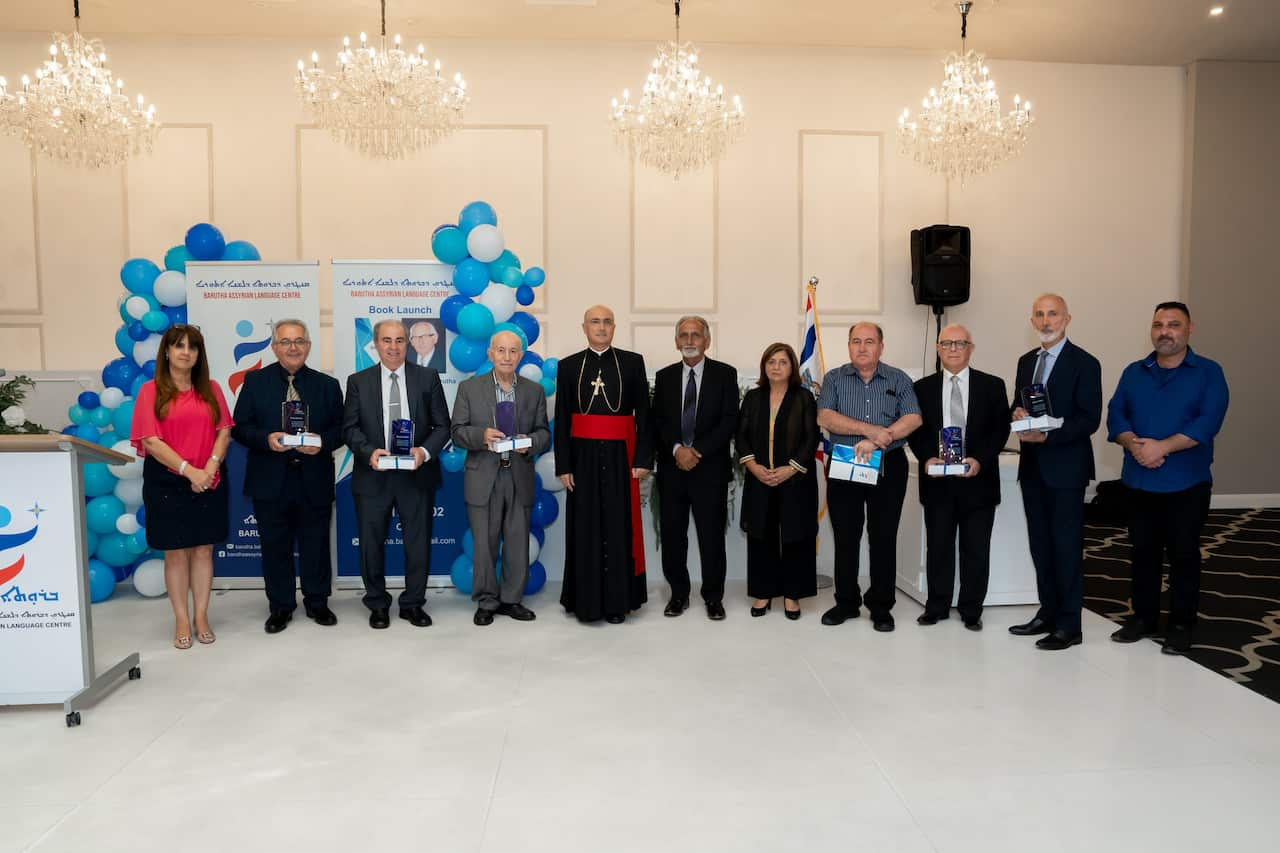
Members of the Barutha dictionary committee
"I divided each English word into verbs, adjectives, and nouns, ensuring each Syriac meaning was included," he said.
Leveraging the expertise of Oshana's brother, George Gewargis - a computer expert who wrote a program to transfer data from a word-processing platform on to floppy disks into a database - the group aimed to digitise and index the collected words.
"When I finished writing the computer program for transferring the word documents to a spreadsheet, I wasn’t sure If it would work, but fortunately the printout showed the program worked flawlessly," Gewargis said.

H.B Mar Melis Zaia, Metropolitan of the Assyrian Church of the East (left) and Barutha Assyrian Language Centre founder, Albert Oshana (right). Credit: George Esho
"Today is the greatest day in my life, publishing my father’s dictionary is like a dream come true," she said.
She mentioned the large attendance was a testament to her father's reputation and hard work within the community.
The softback Barutha English to Syriac dictionary comprises nearly 35,000 words and 747 pages.
The Barutha Assyrian Language Centre published it as part of a push for it to become a specialised institution to set standards and commission research in the Assyrian/Syriac language.
In his speech at the launch, Gewargis said that the centre planned to make the dictionary available online, although this is likely to take more time.
